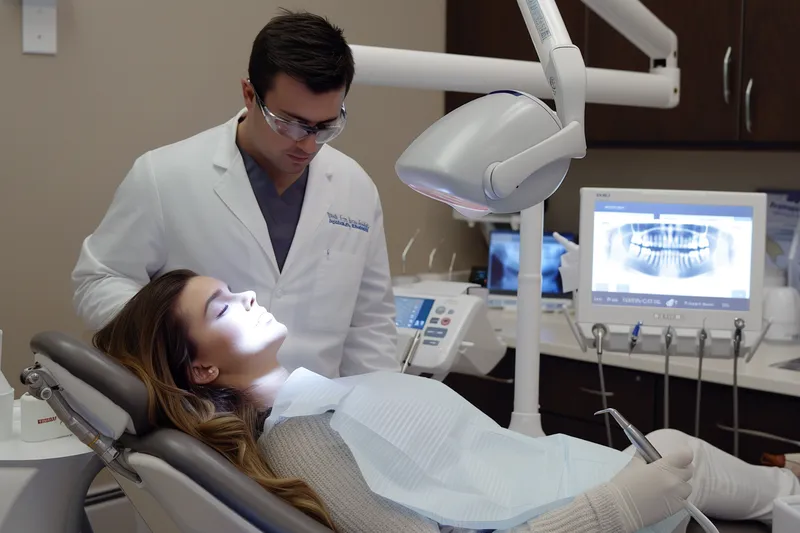Conscious sedation in dentistry serves as a vital tool for managing anxiety during dental procedures. By using medications that allow patients to stay awake yet relaxed, it ensures a comfortable experience, even for those with significant dental phobia. This method not only helps in reducing fear but also enables dentists to perform procedures efficiently, as patients remain cooperative and calm. Whether it’s a routine check-up or a more complex dental surgery, conscious sedation offers a way to undergo dental treatments without the added stress and anxiety.
What is Conscious Sedation?
Conscious sedation is a method used in medical and dental procedures to help patients relax while remaining awake and able to respond to verbal cues. This technique has become increasingly popular due to its ability to minimize anxiety and discomfort during various treatments. By utilizing conscious sedation, practitioners can provide a more pleasant experience for patients, particularly for those who may have a strong fear of dental procedures.
One of the primary advantages of conscious sedation is that it maintains the patient’s ability to cooperate and communicate while significantly reducing stress and pain. This makes it an ideal choice for a wide range of procedures, from minor dental treatments to more complex surgeries. The goal is to achieve a state of calm and ease without fully putting the patient to sleep, thereby reducing the risks associated with general anesthesia.

Definition and Purpose
Conscious sedation is defined as a combination of medications that help you relax (a sedative) and block pain (an anesthetic) during a medical or dental procedure. Unlike general anesthesia, conscious sedation does not render the patient completely unconscious. Instead, it induces a state of drowsy relaxation where the patient remains aware but is less responsive to pain and anxiety triggers.
The primary purpose of conscious sedation is to make the patient feel comfortable and at ease during the treatment. This is particularly useful for patients with dental anxiety or those undergoing lengthy or complex procedures. By reducing the stress and discomfort associated with the treatment, conscious sedation can lead to a more positive experience and better overall outcomes. It also enables the practitioner to perform the procedure more efficiently and with less interruption.
Different Methods of Conscious Sedation
There are several methods of administering conscious sedation, each with its own advantages and applications. The choice of method depends on the type of procedure, the patient’s medical history, and the level of anxiety exhibited by the patient. Common methods include:
- Oral sedation: This involves taking a prescribed pill, typically in the diazepam (Valium) or lorazepam (Ativan) family, about an hour before the procedure. The effects can range from minimal to moderate sedation, depending on the dosage.
- Inhalation sedation: Often known as “laughing gas,” this method uses nitrous oxide mixed with oxygen, inhaled through a mask. This is one of the most commonly used forms of conscious sedation in dentistry due to its rapid onset and quick recovery time.
- Intravenous (IV) sedation: This involves administering sedative drugs directly into the bloodstream through an IV. IV sedation allows for a deeper level of sedation and can be adjusted throughout the procedure based on the patient’s needs.
Your dental practitioner will determine the most suitable method based on your individual circumstances and the nature of the treatment you require. Each method has been extensively studied and found to be safe and effective when administered by trained professionals. If conscious sedation intrigues you, you might find our other articles on related dental advancements equally fascinating.
Benefits of Conscious Sedation in Dentistry
Conscious sedation has revolutionized the field of dentistry, providing numerous benefits to both patients and dental practitioners. This modern approach involves administering sedative medications that help patients remain relaxed and at ease during dental procedures while still being conscious and responsive. The advantages of conscious sedation in dentistry are multi-faceted and significant for a variety of reasons. Understanding the benefits of conscious sedation can help patients make informed decisions about their dental care. This method is particularly advantageous for individuals with dental anxiety, those undergoing extensive procedures, and patients with special needs. Here, we delve into the key benefits of conscious sedation.
Reduction of Dental Anxiety
One of the most profound benefits of conscious sedation is the substantial reduction of dental anxiety. Many patients experience fear and anxiety when visiting the dentist, which can deter them from seeking necessary care. Conscious sedation helps to alleviate these fears by inducing a state of relaxation.
According to studies, dental anxiety affects approximately 36% of the population, with about 12% experiencing severe anxiety. By using conscious sedation, dental practitioners can create a calm environment, allowing patients to receive treatments without the psychological distress often associated with dental visits.
Enhanced Patient Comfort
Conscious sedation significantly enhances patient comfort during dental procedures. It allows the patient to remain in a relaxed state, reducing the perception of pain and discomfort. This is particularly beneficial for procedures that are invasive or prolonged.
Patients under conscious sedation have reported feeling minimal to no pain, which can greatly improve their overall experience. The sedatives used are designed to make the patient feel as if time is passing quickly, which is ideal for lengthy procedures.
Improved Cooperation and Compliance
Another important benefit of conscious sedation is the improvement in patient cooperation and compliance. When patients are relaxed and free from anxiety, they are more likely to cooperate with dental procedures, which can be crucial for successful outcomes.
This is particularly valuable when dealing with younger patients, individuals with special needs, or those who have had previous traumatic dental experiences. Conscious sedation helps these patients remain calm and still, making it easier for the dentist to perform the necessary treatments efficiently and effectively.
Enhanced cooperation also means that dental procedures can be completed more quickly and with fewer interruptions, benefiting both the patient and the dental practitioner.
Understanding these benefits can lead to better dental care experiences. For more in-depth information about various dental treatments and innovations, we encourage you to explore our other articles.
Procedures Commonly Using Conscious Sedation
Conscious sedation is a widely used technique in dental procedures to ensure patient comfort and reduce anxiety. Unlike general anesthesia, which renders a patient completely unconscious, conscious sedation allows the patient to remain awake and responsive but in a deeply relaxed state. This method is particularly useful in procedures that may provoke significant anxiety or discomfort. Here, we will explore some common dental procedures that frequently utilize conscious sedation. It’s important to note that conscious sedation is typically achieved using oral sedatives, nitrous oxide (also known as laughing gas), or intravenous (IV) sedation. The choice of medication and method depends on the specific needs and preferences of the patient as well as the complexity of the dental procedure.
Tooth Extractions
One of the most common dental procedures that benefit from conscious sedation is tooth extraction. Extracting a tooth, especially if it is impacted or has a complicated root structure, can be a stressful and painful experience. Conscious sedation helps to alleviate this stress by keeping the patient calm and comfortable throughout the procedure. This is particularly beneficial for patients who have a strong gag reflex or dental phobia.
There are several types of tooth extractions that might require conscious sedation:
- Simple Extractions: Involve removing visible teeth.
- Surgical Extractions: Required for teeth that are not easily accessible, such as impacted wisdom teeth.
- Emergency Extractions: Performed in cases of severe infection or trauma.
Root Canal Treatments
Root canal treatments are another scenario where conscious sedation is extremely useful. This procedure, aimed at saving a tooth that is badly decayed or infected, involves cleaning out the infected pulp and sealing the tooth to prevent further infection. The process can be lengthy and requires the patient to remain still for an extended period, which can be challenging without sedation.
Conscious sedation in root canal treatments provides significant benefits:
- Reduction of Anxiety: Especially for patients with a history of dental anxiety.
- Enhanced Comfort: By minimizing discomfort and helping the patient remain relaxed.
- Improved Cooperation: Making it easier for the dentist to perform the procedure efficiently.
Dental Implants
Installing dental implants involves several steps, each requiring precision and attention to detail. This procedure includes the surgical placement of a titanium post into the jawbone, which acts as a replacement root for a missing tooth. Given the invasive nature of the surgery, conscious sedation is often recommended to ensure patient comfort and cooperation.
The benefits of using conscious sedation for dental implants include:
- Pain Management: By significantly reducing pain and discomfort during the surgery.
- Reduced Anxiety: Helping patients who are anxious about surgical procedures.
- Better Outcomes: As patients are more relaxed and still, enabling the dentist to perform the procedure with greater precision.
If you found this article helpful, be sure to check out our other informative pieces on dental health and advanced procedures to keep your smile bright and healthy!
Frequently Asked Questions About Conscious Sedation in Dentistry
If you’re feeling anxious about dental procedures, learning more about conscious sedation might help ease your mind. Below you will find common questions and answers that can provide insights into how conscious sedation works in a dental setting.
What is conscious sedation and how does it help with dental anxiety?
Conscious sedation in dentistry refers to the use of medications to help patients relax during dental procedures. It allows patients to be awake and able to respond to commands, but they feel relaxed and may not remember much of the procedure afterwards. This method is particularly helpful for individuals who experience anxiety or fear about dental visits, making their experience more comfortable and manageable.

My name is Salman Kapa, a 73-year-old expert in bone regeneration and dental implantology. With decades of experience in the field, I am dedicated to advancing our understanding of oral health and hygiene. Through my research and writing, I aim to contribute to the development of innovative solutions in dental care.




